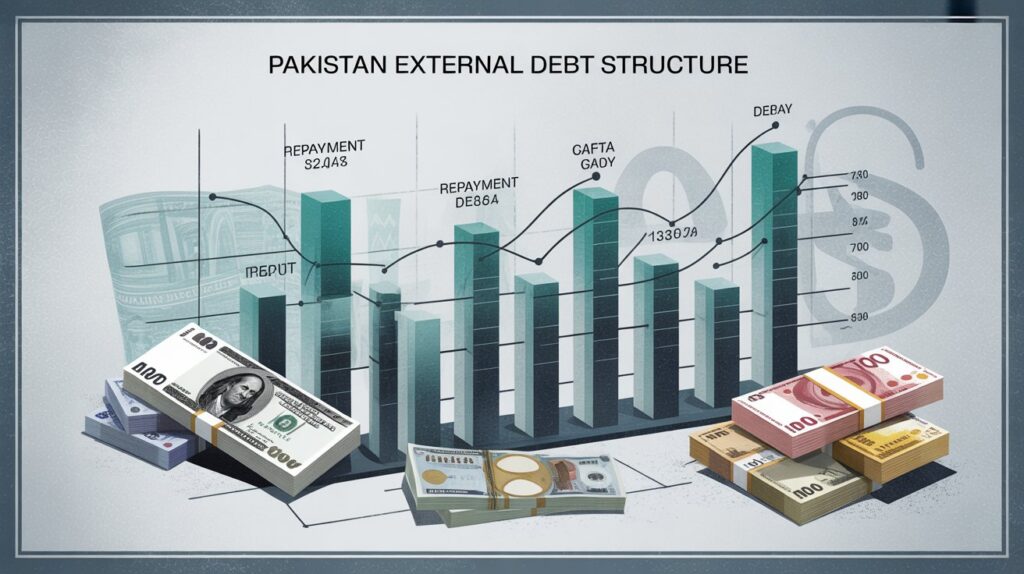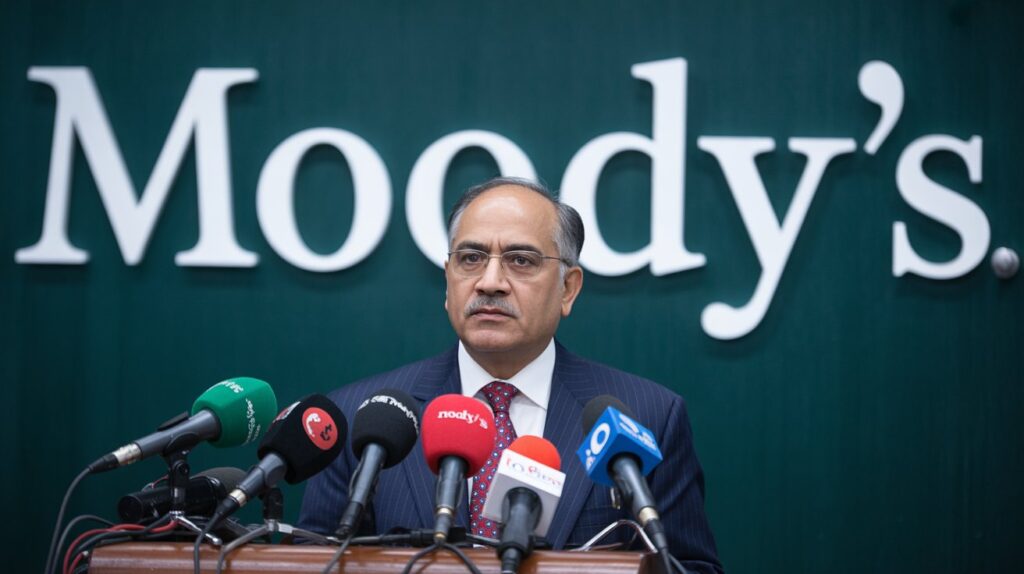Introduction
In a boost to Pakistan’s credit rating on Wednesday, Moody’s Rating Upgrade took the country’s credit score to the speculative Caa1 Grade, pulling it back from the edge of default. The upgrade represented a significant rise in the Pakistan Credit Rating after almost a year, with the agency placing a “stable” outlook.
While debt affordability has been better, it remains among the weakest amongst peers. The upgradation has been assisted by improvement under the IMF Programme, stable external and fiscal conditions stronger than in less than two years ago when default risk was intense.
Rating Upgrade and Outlook
So, get this—after what felt like a lifetime stuck in rating purgatory, the country finally got bumped up from Caa2 to Caa1. It’s not exactly popping champagne at investment grade or anything, but hey, it’s something. Basically, one of those big-shot agencies actually noticed the government hustling for the past year and a half to patch things up economically.
Sure, we’re still hanging out below the “safe to invest” line, but at least now Pakistan doesn’t look quite as shaky to the rest of the world. Small wins, right?
The government can’t give out global bonds at good rates, as its rating is still seen as high-risk. Moody’s lifted the rating but also gave a warning about the weak foreign money holds, even though they got a bit better. These holds are still in a tight spot because they need to pay back a lot of outside debt, thought to be $50 billion in the next two budget years.
Money and IMF Ties

Moody’s says the nation needs around $24-25 billion this year for outside money, and it might be the same in 2026-27. That adds up to about $50 billion. The Finance team keeps working on paying back past loans all year, keeping good money habits even with other money needs.
Moody’s bumping Pakistan up to Caa1? That’s basically their way of saying, “Hey, things aren’t falling apart right now.” IMF’s been breathing down their necks, so yeah, some reforms are actually sticking. FX reserves might inch up, but let’s not kid ourselves—Pakistan’s still gotta hustle for cash from their usual international buddies.
No one’s losing sleep over debt repayments in the near future, at least according to Moody’s. But don’t start the victory parade; those reserves? Still hanging by a thread.
Money State and More Money In
Moody’s said that the money state is now stronger from being very weak before, helped by more people paying taxes. In the last money year, total money in went up to about 16% of all the money made, from 12.6%. This jump came from a big 2% rise in tax money, pushed up by stricter rules and new tax laws.
Cash from other than tax also went up a lot, mainly from a big, one-time extra cash from the State Bank of Pakistan. This year, tax money should grow by another half percent of GDP. Yet, a drop in SBP cash will cut total cash to about 15-15.5% of GDP.
The government finds it hard to get more money without causing upset among people. How stable Pakistan’s credit rating stays will rely on keeping budget control, even with more money spent on defense after the fight with India. Help to the power area is less now, and steps forward in fixing the energy area have been made.
Debt Affordability and Interest Costs
Costs of managing debt have gone down with the drop in home interest rates, sticking close to smaller policy rates. Yeah, so Moody’s is basically saying the budget deficit’s gonna shrink this year—maybe land somewhere between 4.5% and 5% of GDP. Last year it was up at 5.4%, so hey, that’s a bit of an improvement.
Not exactly a miracle, but, you know, baby steps.. They say interest payments will be 40-45% of what we earn this year and next, a fall from about 60% in FY2024.Even with this better state, debt costs are still very high on a world scale. The Moody’s Rating Upgrade notes that big interest bills are a main limit on credit.
Keeping the Caa1 Grade steady needs no delays in reform, as any slows could hurt the outside stand and damage the credit view for Pakistan.
Dangers and Warnings

Watch out, things could get dicey. Moody’s basically said, “Hey, if you keep dragging your feet on reforms, good luck getting cash from your buddies.” That’s not just a slap on the wrist—it could seriously mess with the country’s standing and wipe out whatever baby steps forward it just managed. Bottom line? The government needs to keep hustling with this IMF stuff, or the money tap might run dry.
Though the budget gap is getting smaller, the government needs to manage costs while keeping social peace. More money for defense and less for aid will need smart handling. The Pakistan Credit Score can get better only if tight budget rules and changes keep going.
Conclusion
The rise of Moody’s Rating to Caa1 is a big move from the risk of not paying back for Pakistan. Though paying back debt is still hard when seen next to other rated lands, better tax and outside money plans give a more solid view ahead.
Keeping up with changes as per the IMF plan is key to keep going. With more tax money coming in, spending kept in check, and no delays in outside money, the credit score of Pakistan could get even better. Yet, any slip in these changes or late money could wipe out these good things fast.
Read Also : Coolie Hindhi Movie Review Rajinikanths Masala Nagarjuna Upendra Amir Khan Box Office Ka Dhamal
